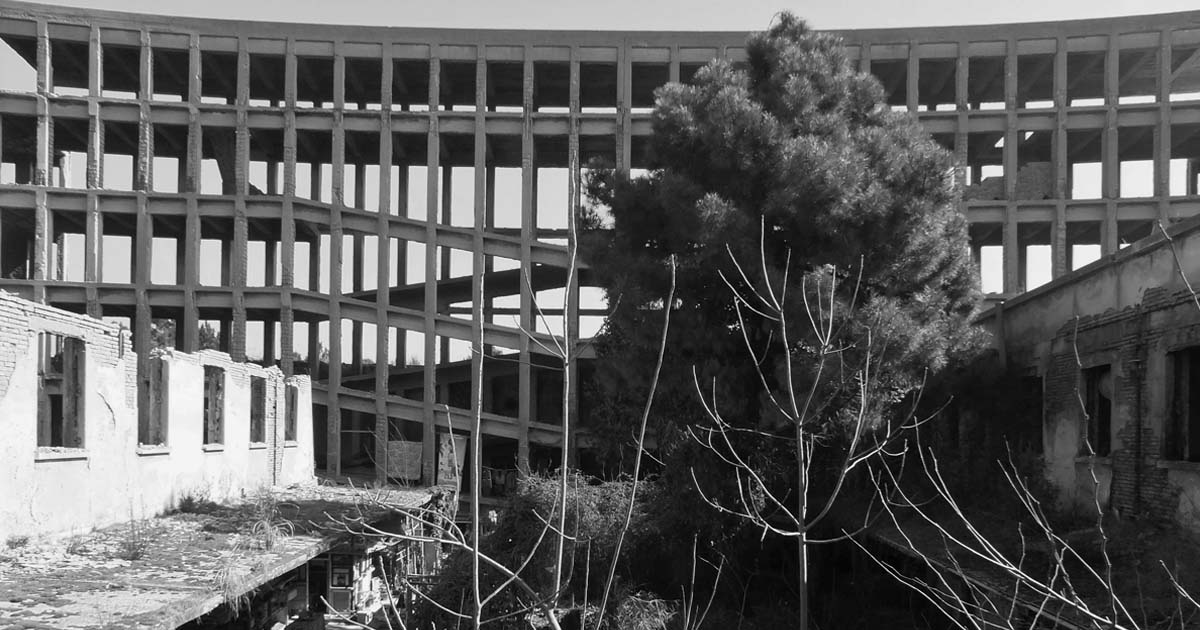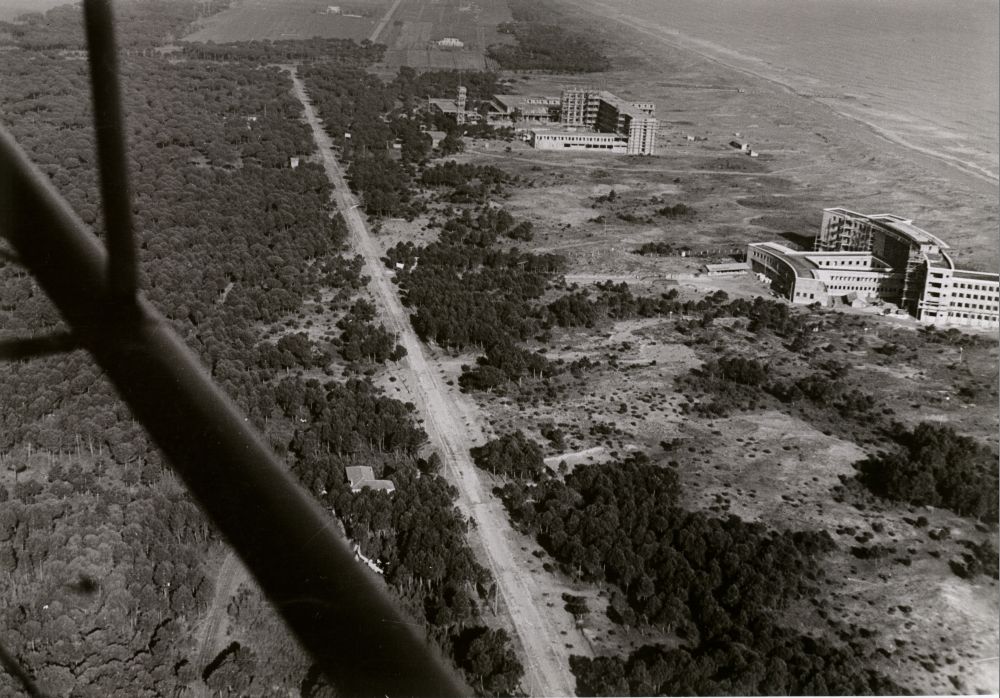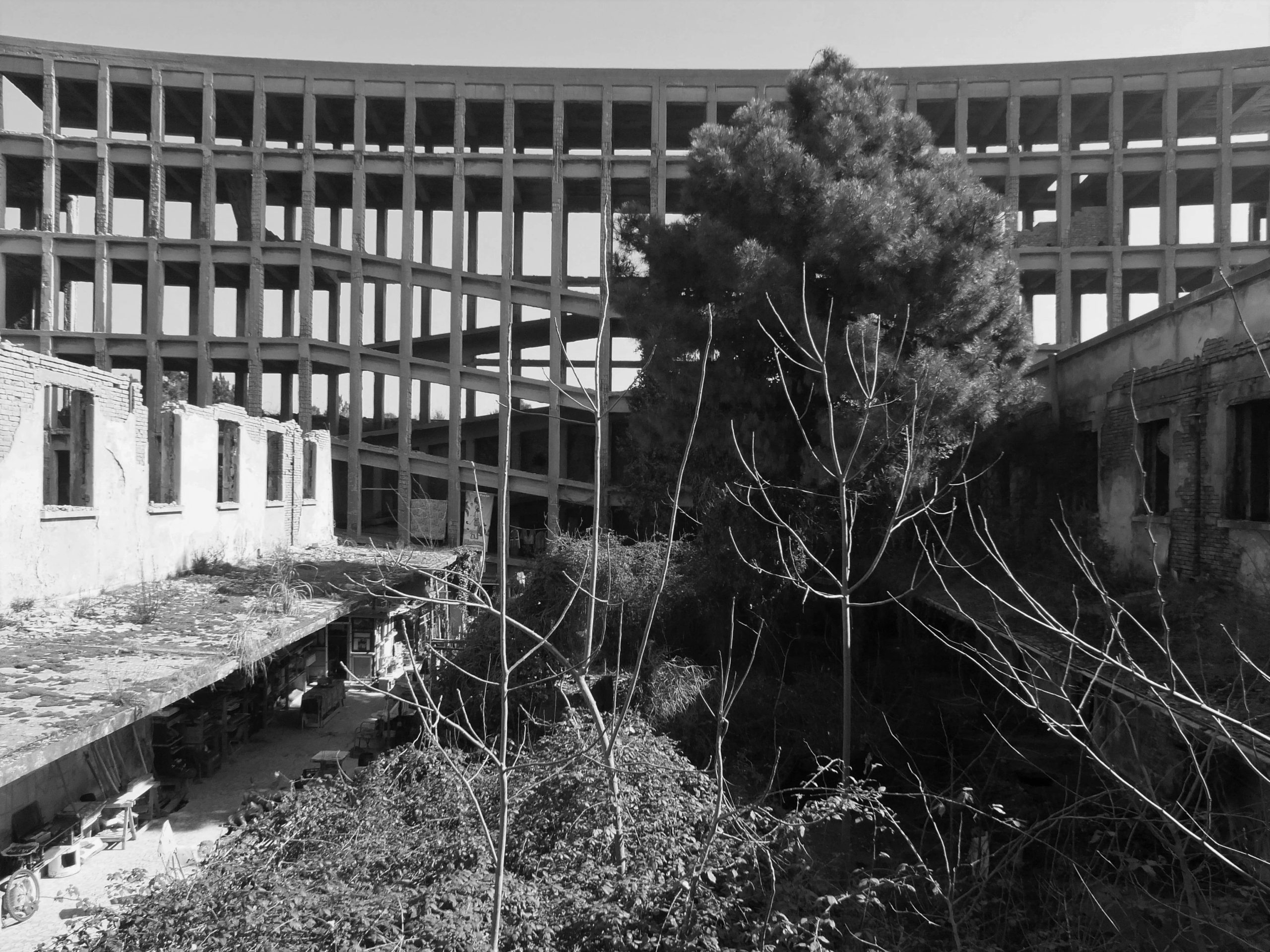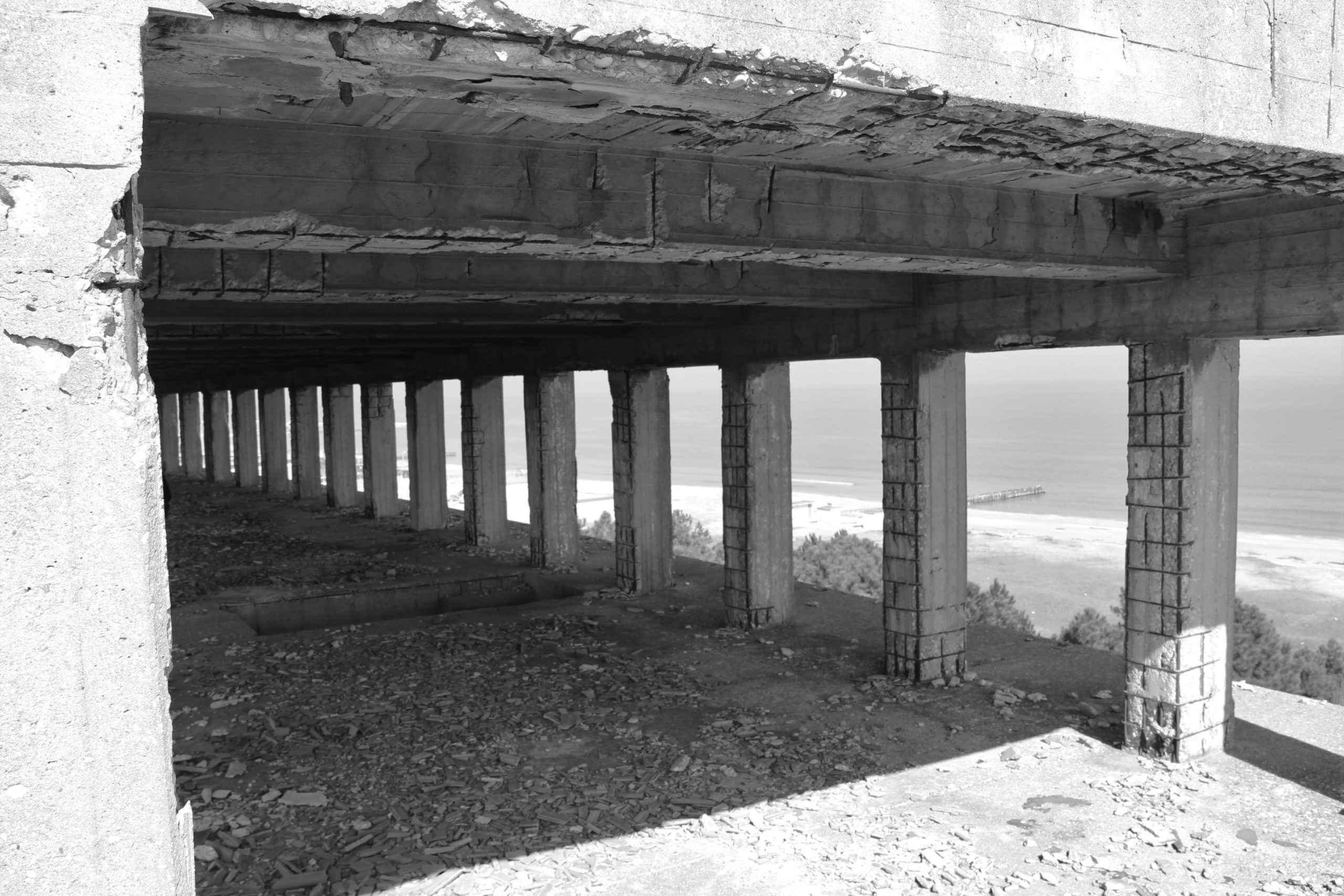From architectural experimentation to forgotten monuments.
By Silvia Demetri,
an architect from Italy
Traveling along the Italian coast it is possible to find big abandoned buildings shaped in bizarre ways: they are the edifices of the former summer camps. Only a few knows that some of these buildings could be considered one of the highest expressions of Italian rationalism in the panorama of the European architectural experimentation of the Twenties and Thirties.
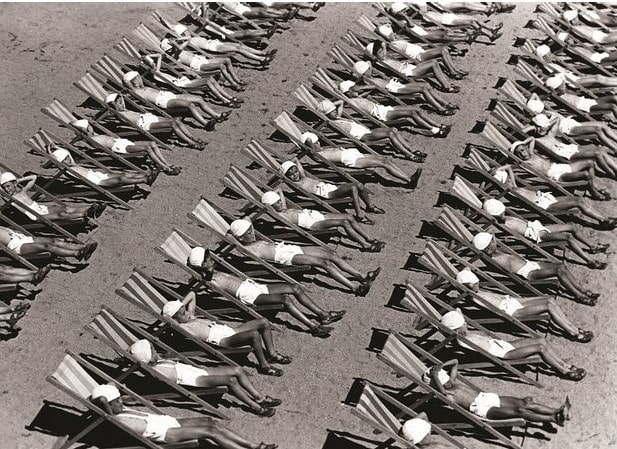
From the end of the 19 th century the climatic colonies phenomenon arose along the coasts – but also in the mountains – in order to host young boys and girls in a wholesome context where they could sunbath and enjoy sports surrounded by nature, far from unhealty cities.
Children sunbathing during the summer /Photo: historical archives
Over the decades, in Italy the colonies developed both from the point of view of their social role and of their architectural meaning as places dedicated to children’s education and health. At the beginning of the 20th century, according to regional construction traditions, those places were organized in large pavilions, which progressively developed into masterpieces of Rationalism architecture during the Fascist regime. They gradually became anonymous buildings without any architectural quality and, by the Sixties, they were completely overwhelmed by the advent of mass tourism.
It was in the period between the two World Wars, when evolved the Fascit dictatorship, that the summer camps and the whole Italian Rationalism moviment found their maximum freedom of expression. In 1938, in Italy there were more than 4800 colonies, all devoted to moral and physical education of children. Their aim was to draw the kids to the Fascist doctrine. They were like small barracks in which the architecture played the key role of translating into spaces and indelible forms in children’s memory the teachings of the Regime. In this respect the spatiality of buildings assumed a major position in which different shapes must correspond to different functions: a monumental entrance representes the physical act of entering a community and the large ramps, facing the sea, show the little soldiers’ parades.
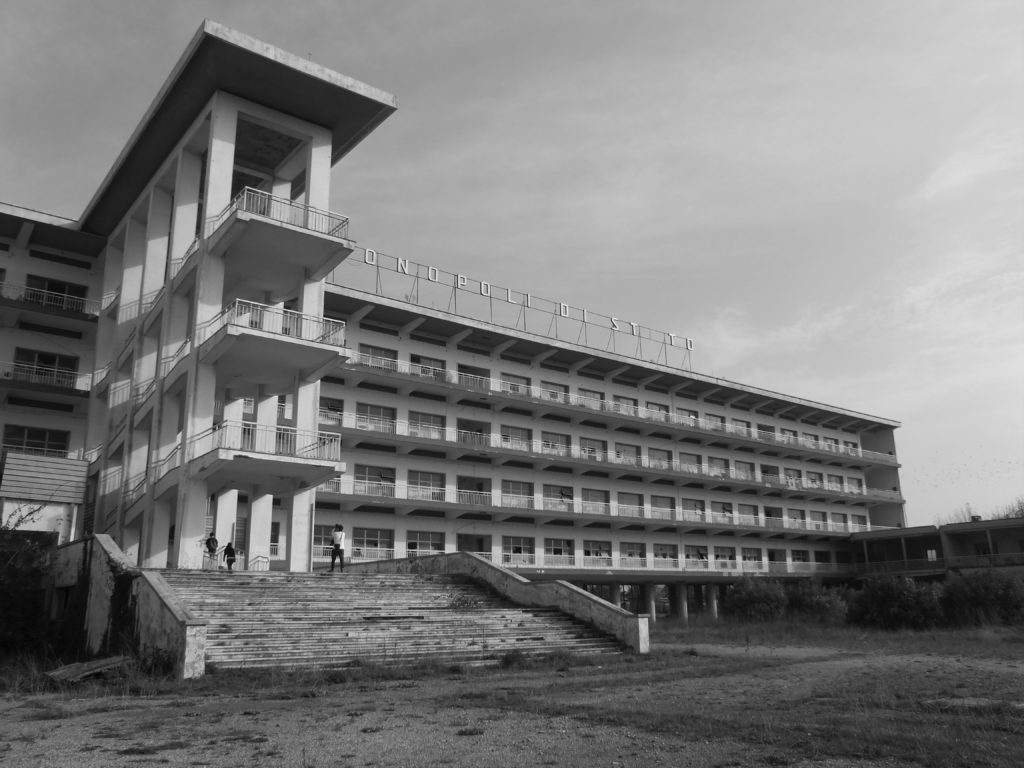
“I progettisti pensano spazi reali per funzioni cariche di valori simbolici – Architects elaborate real spaces for functions, charged with symbolic values”
G. Mulazzani
Summer camp Montecatini – Monopoli di Stato, Cervia (RA) /Photo: Silvia Demetri
It was the young architects who took advantage of the opportunity to work on buildings that have not been strongly typed yet – like schools or hospitals were, instead – with a new freedom of expression and experimentation, trying to insert Italian architecture into the Rationalist movement that was imposing itself in the rest of Europe. The intention was to purify the architecture of the aesthetic components, freeing the forms from the decorative apparatus, but this research will not reach a unitary architectural style and their tension towards a new monumentality, the autarchic dream of a renewed Roman civilization, will not find a realisation. However, this experimentation left along the Italian coasts almost forgotten jewels of pure Rationalism and Avant-garde. Among these, worthy of particular note, are the so-called “Talking Architectures”: big monobloc buildings whose planimetry recalls the mobility, machines as images of modernity with a strong and symbolic value in the Futurist panorama. Futurism was an Italian Avant-garde movement that characterized the 20th century and celebrated velocity and technological innovations. Some “Talking Architectures” represent planes or ships and others a seaplane nestled on the beach.
The colonies buildings were designed to be seen from above, from an airplane, to reaffirm their relationship with Modernism and the Fascist will to enhance the grandeur of architecture – symbol and expression of the Regime – compared to the smallness of man. Children lived in huge spaces which were shaped in excessive and metaphysical forms and where even daily activities took on emphatic rhythms.
Starting from the post-World War II the phenomenon of summer camps slowly waned due to the progressive disappearance of the premises they had been built for. The health emergency could almost been controlled by medicines, the education of the new generations had passed into the hands of families and schools and, above all, the advent of mass-tourism that led millions of Italian families to spend their holidays at the seaside.
Now, along the coasts stand the skeletons of the buildings that used to host the colonies, abandoned memories of a different era. The historical and architectural value of these buildings has been recognized as expressions of the uniqueness of Italian Rationalism and have become part of the safeguarded Italian cultural heritage.
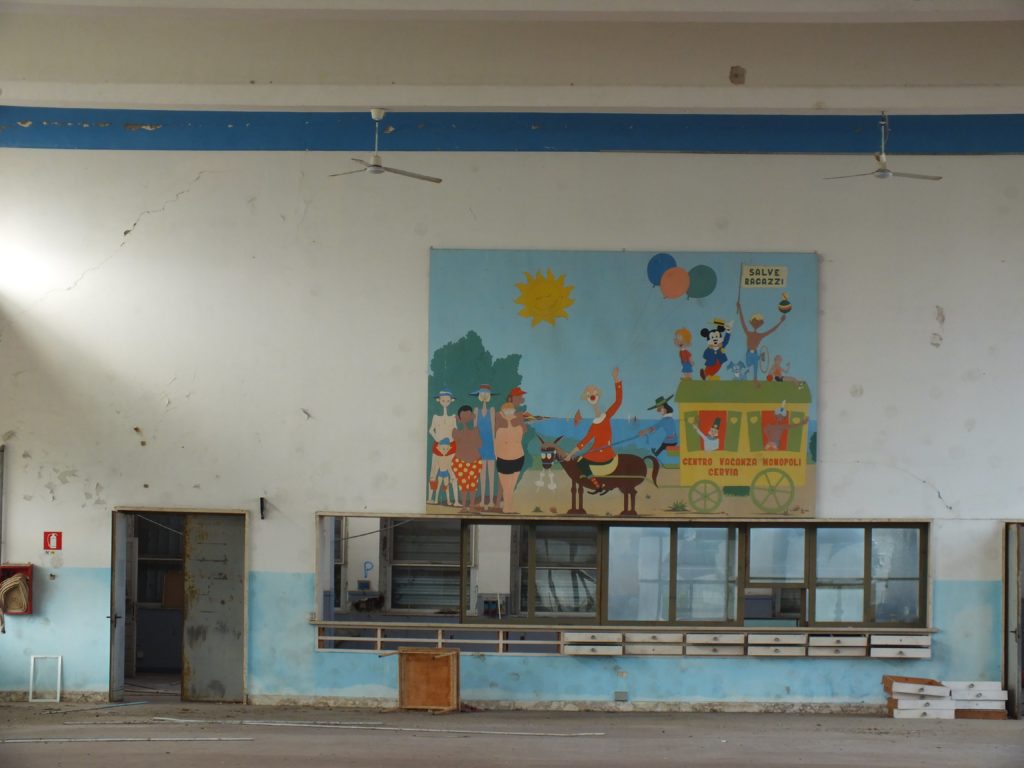
However, are we still far from understanding what role could they play in the contemporary society? What will their future be?
Summer camp Montecatini – Monopoli di Stato, Cervia (RA) /Photo: Silvia Demetri
